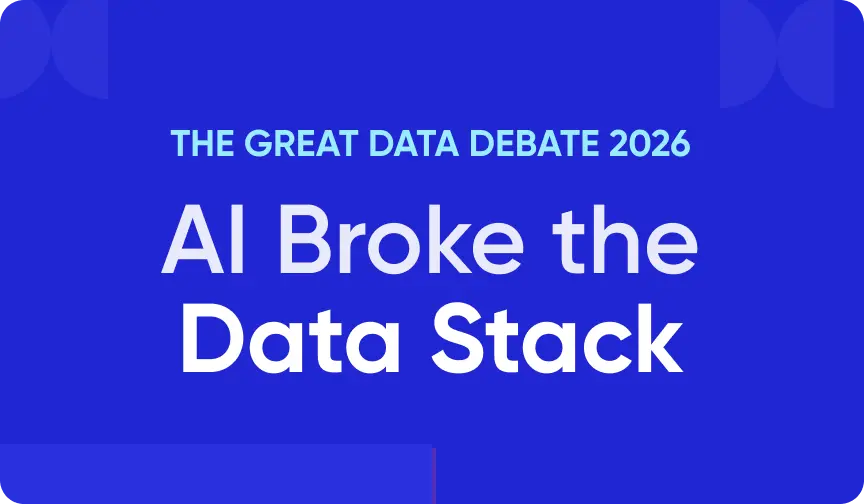What Are the Disadvantages of a Federated System?
Share this article
When implementing a federated system, it’s crucial to understand its potential drawbacks.
Federated systems offer benefits like flexibility and scalability. However, they also present challenges that can significantly impact your organization’s data strategy.
Unlock Your Data’s Potential With Atlan – Start Product Tour
By evaluating these disadvantages, you can determine whether a federated system aligns with your goals, resources, and technical capabilities.
This evaluation is particularly important when comparing federated systems with other data management approaches, as it will help you choose the most suitable architecture for your needs.
What is a federated system?
Permalink to “What is a federated system?”A federated system is a type of architecture where different independent entities (like databases, services, or systems) work together as a single unit while keeping their autonomy. Each entity can operate on its own, but they collaborate through standardized protocols or interfaces.
This setup allows organizations to integrate data from various sources without centralizing it, enabling them to manage distributed data while maintaining local control and privacy.
For instance, in a federated database system, you can run queries across multiple databases that are managed independently, yet to the user, it feels like one unified database.
This approach is especially useful in situations like multi-cloud environments or partnerships between organizations where maintaining control over data and respecting privacy are essential.
Disadvantages of a Federated System
Permalink to “Disadvantages of a Federated System”While federated systems offer flexibility, they also present several challenges:
1. Complexity in Management
Permalink to “1. Complexity in Management”Federated systems connect multiple, independently managed data sources, which complicates system-wide management. Each source may have its own governance policies, data formats, and update schedules. This independence makes it difficult to maintain consistency, enforce policies uniformly, and troubleshoot issues.
Managing this complexity often requires specialized tools for data integration and governance. Additionally, organizations need skilled personnel who understand both the technical and organizational aspects of the system. Establishing adaptable data governance frameworksacross various sources is essential to addressing these challenges effectively.
2. Performance Issues
Permalink to “2. Performance Issues”Federated systems distribute data processing across multiple nodes, which may be geographically dispersed and operate under different conditions. This distribution can result in slower query responses and data retrieval times, particularly when aggregating large data volumes from multiple sources.
Network latency and performance variations across nodes can further exacerbate these issues. To optimize performance, careful system design is necessary. This includes implementing caching mechanisms, optimizing query plans, and ensuring efficient data distribution. Regular monitoring and tuning are also required to address performance bottlenecks.
3. Security Risks
Permalink to “3. Security Risks”The decentralized nature of federated systems increases the attack surface, making it harder to protect the entire system uniformly. Each node may implement its own security measures, leading to inconsistencies and potential vulnerabilities where less secure nodes become entry points for attackers.
To mitigate these risks, organizations must implement standardized security protocols across all nodes. This includes measures such as encryption, access controls, and regular security audits. Employing a centralized security management system to monitor all nodes can enhance threat detection and response.
4. Data Inconsistency
Permalink to “4. Data Inconsistency”Federated systems often involve data from various sources, each with its own update schedules and formats. This variability can lead to data inconsistency, where the same dataset might have different versions or formats across nodes.
Such inconsistencies can result in inaccurate data analysis and unreliable business insights. Addressing this issue requires implementing data synchronization protocols and establishing clear rules for data versioning. Regular reconciliation of data across nodes and standardizing data practices where possible can also help maintain consistency.
5. High Costs
Permalink to “5. High Costs”The complexity and specialized nature of federated systems often translate into higher costs. Initial setup can be expensive, involving the integration of disparate systems, tool customization, and staff training.
Ongoing maintenance, including regular updates, security management, and performance optimization, further adds to operational expenses. To manage costs, it is crucial to carefully plan the system’s scope and scale. Leveraging scalable cloud-based solutions, adopting open-source tools where appropriate, and optimizing resource allocation can help reduce financial strain.
Conclusion
Permalink to “Conclusion”In summary, while federated systems offer flexibility and scalability by integrating data from multiple independent sources, they also come with significant challenges. Managing disparate systems, potential performance issues, increased security risks, data inconsistency, and high costs are all critical factors that can affect the effectiveness of a federated system within your organization.
Before implementing a federated system, it’s crucial to weigh these disadvantages against the potential benefits. Organizations should conduct a thorough analysis of their specific needs, technical capabilities, and long-term goals. This might involve investing in advanced data integration and security tools, establishing robust governance frameworks, or even considering alternative architectures if the challenges of a federated system outweigh its advantages.
By carefully evaluating these factors, you can make an informed decision that aligns with your organization’s data strategy, ensuring that your chosen system effectively supports both your operational and strategic objectives.
Related reads
Permalink to “Related reads”- Federated Data Governance: Principles, Benefits, Setup
- Federated Data Catalog: When Should You Go for One?
- Federated Architecture: Learn the Key Benefits & How It is Different From Other Architectures!
- What is Data Mesh? - Examples, Case Studies, and Use Cases
- Data Mesh Catalog: Manage Federated Domains, Curate Data Products, and Unlock Your Data Mesh
- How to Implement Data Mesh from a Data Governance Perspective?
- Data Governance Models: Centralized, Decentralized, and Federated Explained
Share this article





















